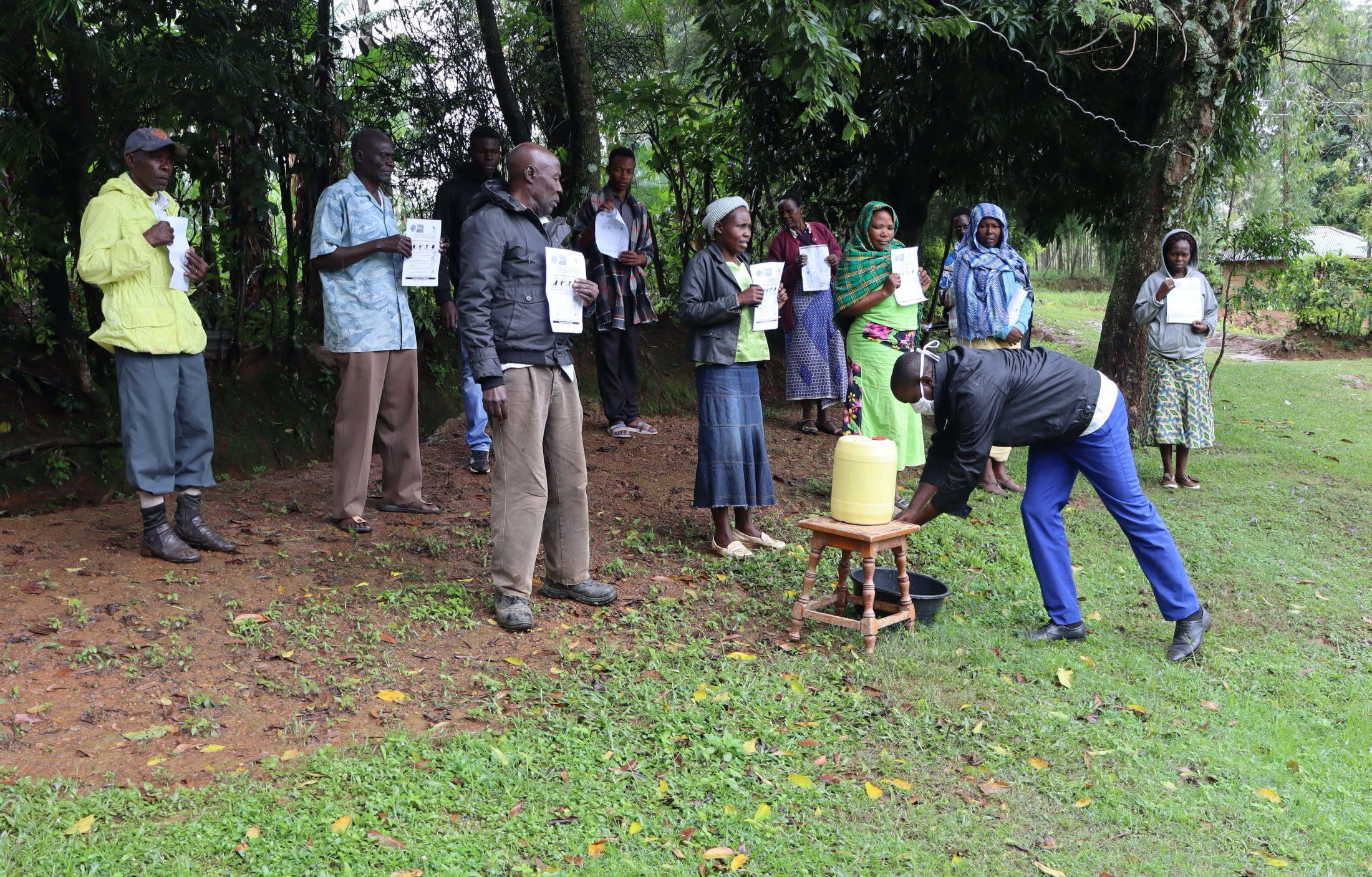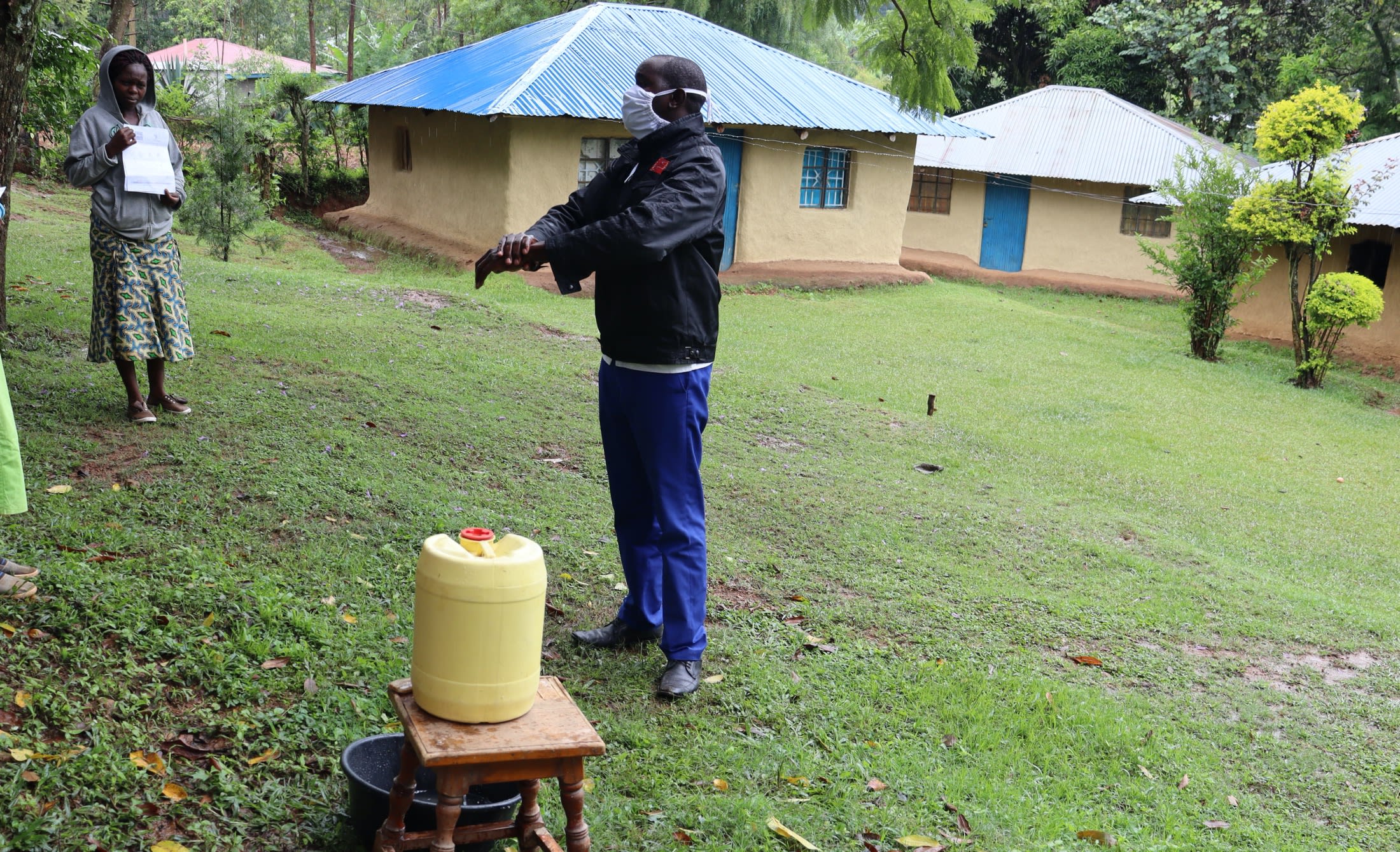This project is a part of our shared program with Western Water and Sanitation Forum (WEWASAFO). Our team is pleased to directly share the below report (edited for clarity, as needed).
Background Information
This unprotected spring is located in Mukhuyu Village, Mwitumbwi sub-location, Mukhalakhala location, Mwivona Ward of Luanda Constituency in Vihiga County. The spring serves 58 households, totaling 464 people. 200 of these are men and 264 are women. The water is used for drinking, cooking, watering animals, and farm irrigation.
Justification
Community members report high levels of waterborne illnesses like typhoid, cholera, and dysentery.
The spring has a continuous flow of water even during the dry season, and persists even when other springs are completely dry. Although this seems positive, the spring's persistence has a negative result: other communities make use of Mukwambo spring, creating more congestion and contamination during the dry seasons.
When Mukwambo is too dirty, it is the women and children who make the trek to find clean water. They spend hours carrying buckets to remote mountain springs far away from the village. This is a loss of economical time that could otherwise be used for farming and other activities.
The spring water is often further contaminated from transportation in open buckets. After it arrives home, drinkers do not boil or treat is before consumption.
Regarding personal hygiene, many households have latrines that are in poor condition. Children and the elderly often do not use these latrines for fear of falling through the slats. Their only option is to use the privacy provided behind shrubs and buildings. During rainy weather, this waste is washed into the spring.
These are also very few hand-washing facilities and clotheslines. Those that have the opportunity to use these facilities lack the training on how to properly do so.
Mukhuyu Village is urging WEWASAFO to help them protect Mukwambo spring and build concrete sanitation platforms (sanplats). They are hoping to reduce the cases of waterborne illnesses and the time lost searching for clean water. This will provide greater leverage in the community's fight against poor health and poverty.
Water and Sanitation Management Committee
This training was held from September 29-30. A total of 16 people attended of which 10 were female and six were male. Training aimed to equip the committee with the skills needed to manage and maintain the spring protection project.
The facilitator familiarized the participants with what local materials would be needed by the start of construction. It is expected that the donor and organization provide 80% while the community meets them at 20%, which encourages the locals to invest and own the improvements made. This 20% includes hardcore, ballast, bricks, and clean sand. Beyond materials, the committee will find two local laborers willing to help build the spring protection system. Households should also be open to hosting the work team during the construction period.
The committee was responsible for choosing five family compounds that would most benefit from new sanitation platforms (easy-to-clean concrete latrine floors). These families will have to prepare by digging a latrine pit, and by providing clean sand, bricks, and wall materials.
The committee agreed on the following roles and responsibilities:
- Make repairs to the spring as needed
- Clean up garbage in the area
- Build a fence around the spring
- Monitor and evaluate the spring
- Write and then enforce rules for behavior
- Keep records of what goes on
The facilitator took the committee to the spring for a practical training session. There they discussed dos such as planting indigenous species, grass, and digging drainage, and don'ts such as bathing and washing in the water.
Protecting the spring is only one method to ensure that waterborne disease is reduced. The committee also brainstormed extra ways to practice good sanitation and hygiene:
- Boil or treat drinking water
- Clear bushes around homesteads (prevent pests from breeding)
- Drain stagnant water
- Cover stored water
- Always use sanitation facilities (latrines, dish racks, clotheslines, etc.)
The facilitator then closed by asking some evaluation questions. The training turned out to meet everyone's expectations to the point that the committee invited WEWASAFO back to do more. One of the participants expressed their thankfulness, saying, "I am happy today for taking your time to come and train us, at least I have now gained knowledge on water sanitation and management, thank you and God bless you together with WEWASAFO organization and more so to the donor."
Community Health Worker Training
Hygiene training was held at Mukwambo spring from October 1-2. The group included 14 adult participants. The purpose of this training was to equip community members with the skills to prevent illness, promote health, and evaluate hygiene.
Participants agreed on the following ways to improve their environment:
- Clear the bushes around homesteads
- Drain stagnant water
- Avoid using the bathroom outside
- Cover food
The facilitator also taught in-depth courses on washing hands, preparing water and food, and family planning.
Project Results:
Spring Protection
Protection of Mukwambo Spring is complete and now in use by community members. They are very happy to be getting clean water for drinking, cooking, and farm irrigation!
Contamination from surface runoff is no longer an issue, so cases of waterborne diseases are expected to greatly decrease. Women and children no longer spend hours carrying buckets of water from remote streams many miles from their village. The saved time is now invested in more productive activities like farming. And now that the women have received training, the water is also safe on the way home. These women know how to properly fetch water from their protected spring and how to safely store it at home. They also know how to both boil and treat water to ensure even greater purity.
Household Sanitation Platforms
The sanitation platforms have been installed and are now in use by beneficiaries. Children and elderly are no longer afraid of falling through old, weak flooring slats. These more vulnerable community members now have safe and easy-to-clean concrete floors to stand on.
Thank You for making all of this possible!
 Protected Spring
Protected Spring
 Rehabilitation Project
Rehabilitation Project





















